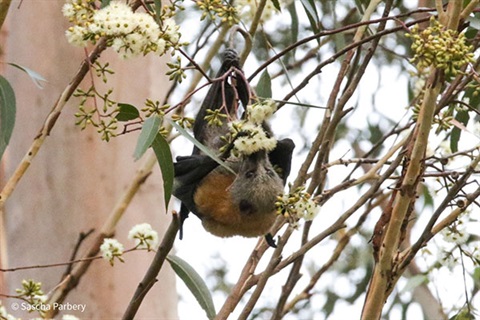Why are Flying-Foxes Important?

Did you know without our flying-foxes many animals, like our koalas, would not exist.
Find out why flying-foxes are so important to our environment plus learn other important facts about bats!
No flying-foxes means no koalas
Flying-foxes play a crucial role in the ecosystem, pollinating the eucalyptus trees that provide food and habitat for koalas.
By protecting flying-foxes and their habitats, we are also protecting the homes of our beloved koalas.
Flying-foxes are super pollinators
Flying-foxes are important pollinators for many plant species.
These fascinating creatures play a crucial role in our ecosystem.
This combination of being big, very mobile, and flexible in what they eat makes them very important pollinators for Australia’s forests and woodlands.
Like humans flying-foxes are very social!
Flying-foxes like to hang around together in camps.
They have 30 to 50 different sounds that have different meanings, including mating and identifying their pups.
They fly out of their camp on dusk and come back at dawn. When they get back they need to find their pups, often amongst hundreds of others. Mums calling out to their pups can make the camp very noisy.
Find out more about flying-fox camps in the Byron Shire.
Flying-foxes use natural smell to attract females
The smell is produced by the scent glands of the male flying-fox to mark their territory. The smell is stronger during mating in March and April when males are establishing their harem.
What challenges do flying-foxes face?
- Flying-fox numbers have declined by up to 30% over the past decade.
- Habitat clearing is the main threat to grey-headed flying-foxes. Between 2019 to 2020 devastating bushfires burned 34% more habitat than the previous season.
- Entanglement in fruit netting and barbed-wire are also major causes of flying-fox injuries and death.
- Before 2021 it was legal to shoot flying-foxes in some areas, which reduced their population numbers.
What can I do to help protect flying-foxes?
You can help by encouraging wildlife habitat and planting flying-fox friendly species. Visit our list of tree species for a full list of preferred plants for the Far North Coast.